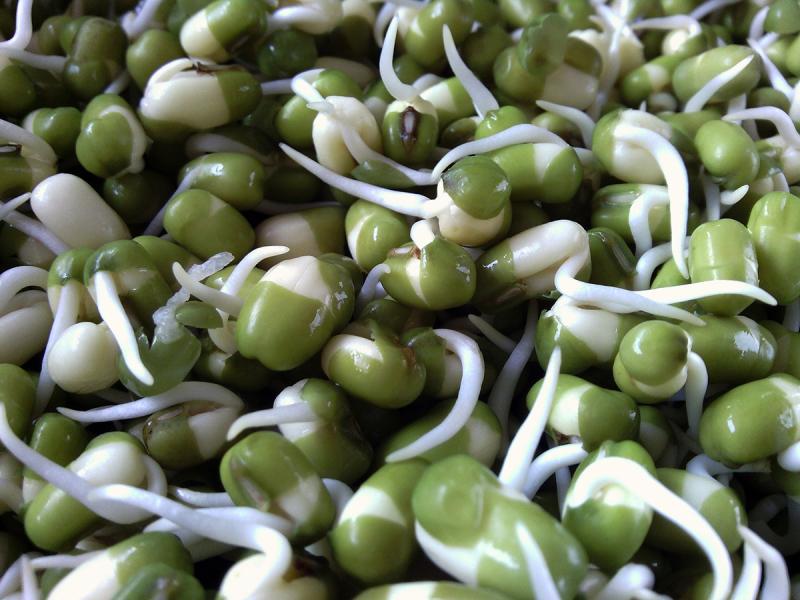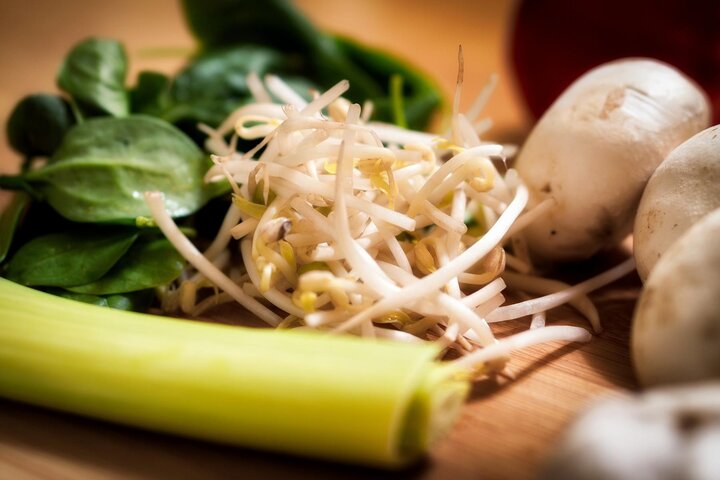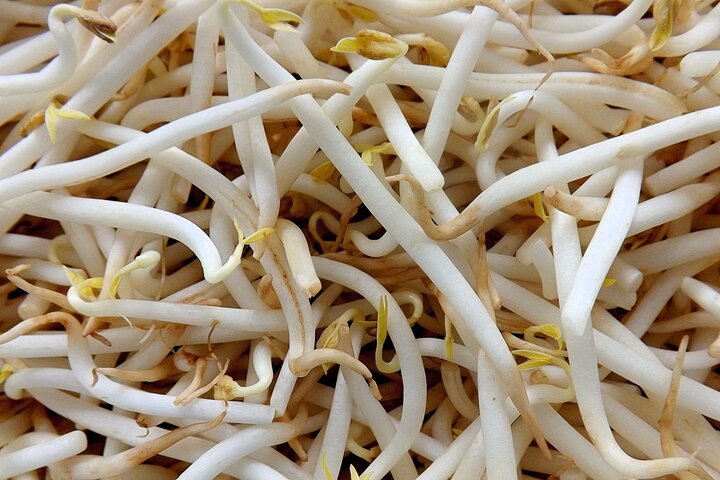Sarah Browning, Nebraska Extension Educator

Growing seeds for sprouts, can include alfalfa, broccoli, Brussels sprouts, cabbage, kale, lentils, pea, radish and buckwheat. Image by pixabay.com
What vegetable crop can you grow all year round and harvest in as little as three days? Give up? It’s sprouts.
Seeds for Sprouts
Though people usually think of bean sprouts – grown from soy and mung beans – you can also use a number of other seeds to grow sprouts, including alfalfa, broccoli, Brussels sprouts, cabbage, kale, lentils, pea, radish and buckwheat.
Some seed catalogs list seeds for sprouting. Health food stores and gourmet sections in supermarkets are other sources. Buy seeds that are sold expressly for sprouting. Those sold for planting may have been treated with fungicides or insecticides.
Food Safety with Sprouts
Sprouts have emerged as a significant source of foodborne illness, so it’s critical to use good techniques when growing them. Pathogenic bacteria, like Salmonella and E. coli O157:H7, can be present on seed and multiply very quickly in the warm, wet environment used to grow sprouts.
Though you can buy various gadgets for sprouting seeds, all you need is a glass jar that you can cover with cheesecloth. A wide-mouth quart jar with a screw-on ring works fine. Sterilize your seed-sprouting jars by soaking them for at least 5 minutes in a solution of ¾ cup plain, unscented bleach per gallon of water. After soaking, rinse them with clean water and allow them to dry.
Seeds for sprouts should be treated before germination to eliminate pathogens, using one of the following methods.
- Seed purchased for sprouts should be heat treated on the stovetop for 5 minutes, in a 3% solution of hydrogen peroxide which is available at most drug stores. Heat the liquid to 140° F, measuring the temperature with a cooking thermometer. Place the seeds in a small wire strainer and immerse them in the heated peroxide solution. Swirl the seeds periodically during heating so the seeds receive uniform exposure. Discard the peroxide solution after each batch of seeds, since its effectiveness will decline rapidly.
- Soak seeds in undiluted vinegar for 15 minutes. Grocery store vinegar is fine.
- After heating or vinegar soak, rinse the seeds in running tap water for 1 minute.

Soak, Rinse and Drain Method of Growing Sprouts
Once the seeds have been treated and jars sterilized, pour seeds to a depth of 1/2 to 1 inch in each jar. Add water to the jars, enough to cover the seeds plus one inch more. Pour or skim off any floating seed, seed coats or other debris. This debris has been tied to most contamination events.
Next, add lukewarm water and soak the seeds for 12 to 16 hours. The volume of water should be twice the volume of seeds. That is, if you put ½ cup of seeds in the jar, you should add 1 cup of water.
After 12-16 hours, drain off the water. Rinse the seeds with more lukewarm water and drain them again thoroughly. From this point on, you will not let the seeds or sprouts soak in water again. Cover the top of the jar with cheesecloth, holding it in place with a screw-on ring or a heavy rubber band. The cheesecloth will hold the seeds in the jar while you pour off water later in the process.
Place the jar on its side to distribute the seeds evenly. Keep the jar in a dark place at room temperature, 68 – 72° F. Continue to rinse the seeds two to four times a day until the sprouts are the desired length. This may take three to six days, depending on the kind of seed and the length of sprout desired. After rinsing, be sure always to drain off all excess water – seeds left in water will ferment and spoil.

Just before you’re ready to use the sprouts, you can “green them up” by placing the jar in a sunny window for a few hours. But don’t leave them in sun too long, or they will get tough and bitter.
When sprouts are the right size, wash them thoroughly to remove the seed husks. Then you can use the sprouts in salads and sandwiches, stir-fry, soup, stew and casseroles.
Storing Sprouts
Sprouts can be stored for one to two weeks in sealed bags or jars in the refrigerator. To freeze sprouts, blanch them 3 minutes over vigorous steam, cool in ice water, drain and pack into sealable freezer containers.
Sprouts are low in calories and fat. Compared to other vegetables, they are high in the Vitamins B and iron, and they contain more Vitamin C than most seeds.
For more information on growing sprouts visit the Sprout People website.
Images from Pixabay.com.